Optimize Business Storage Solutions with a 4-Bay NAS System
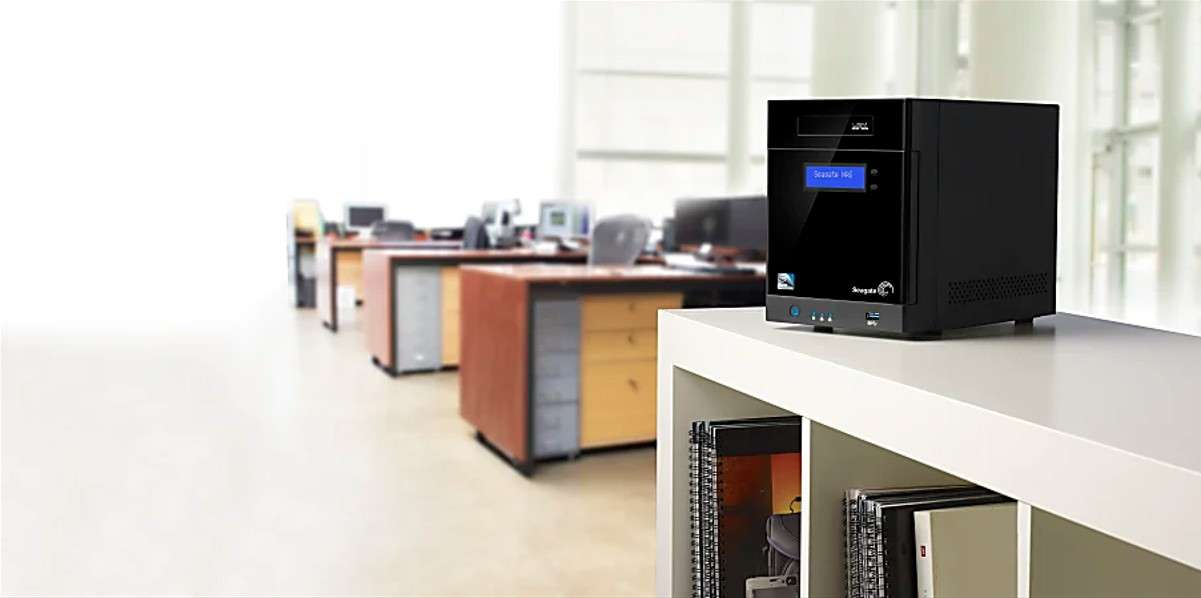
No one organization has access to the breadth of knowledge and expertise across digital areas that small businesses require. When it comes to file sharing, backup, and remote access needs, traditional storage solutions like external hard drives and local servers tend to struggle with how much you need. However, as more businesses generate a massive amount of data through daily operations, documents, and multimedia content, the demand for robust, scalable storage can become a critical undertaking. Enter a 4-Bay Network Attached Storage (NAS) solution that strikes the right balance between capacity, performance, and reliability. Notably, this modern storage technique does not just solve the immediate problem of data management; it also comes with features that increase redundancy and thus increase data security while promoting seamless access for remote teams and serving as a cheaper alternative to costly server setups. Set up a 4-Bay NAS System — A 4-Bay NAS system helps businesses begin innovatively and efficiently manage their data while providing room for future scalability.
What Is a 4-Bay NAS and Why Does Your Business Need It?
A 4-Bay NAS system is a dedicated file storage system that connects to a network, ideal for business, suitable for centralized data access and management. This advanced machine includes four drive bays for storage space and configuration options. Each of the bays can be outfitted with high-capacity hard drives or SSDs, allowing businesses to create a powerful storage backbone that can scale with their requirements. More interestingly, the system optionally supports RAID (Redundant Array of Independent Disks), and the list includes RAID 5 and RAID 10 configurations, which are more than just an essential redundancy against data loss. If a drive fails, you still have all the data on the other drives.
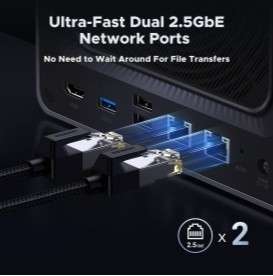
A 4-Bay NAS offers versatility for a business beyond simple storage, from automated backups to remote access capabilities and file sharing. Being network attached allows the other team members to access the files at the same time from different locations, instantly improving collaboration and productivity. You can start with a few drives and scale to meet storage needs, making this a future-proof system. While new NAS systems like UGREEN systems come with technologies such as virtualization, Docker container support, and cloud sync capabilities, making them an all-in-one data storage and management system for growing organizations.
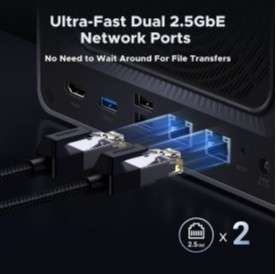
Key Features to Prioritize in a 4-Bay NAS
Expandable RAM for Multitasking Efficiency
The total amount of RAM in your NAS system directly affects how many concurrent operations it can hold. 4-Bay NAS units today come with expandable RAM and typically have a base of 4GB but can be upgraded to 32GB or higher. Having such a ton of memory ensures that the system can still function smoothly, even when multiple team members are opening files or when running memory-hungry applications such as virtual machines.
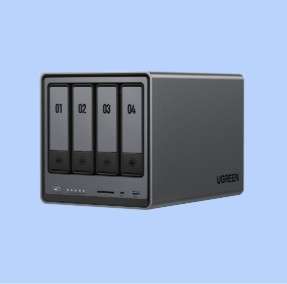
High-Speed Connectivity Options
The best data transfer speeds need advanced connectivity features. Seek out systems with 10 Gigabit Ethernet (10GbE) ports, which provide much faster network throughput than bog-standard Gigabit connections. SSD caching: For increased system responsiveness, frequently accessed files are stored on faster solid-state storage to reduce latency for common operations.
Media Server Capabilities
Managing and serving multimedia has been a forte of modern NAS units built for this purpose. Media server functionality is built-in too, supporting protocols such as DLNA and Plex for access to your video, audio, and image files from this device. These features are critical for businesses that have thousands of media libraries, marketing assets, or training content — enabling their teams to get instant access while keeping their file structures organized, maintaining version control, etc.
Step-by-Step Implementation for Small Businesses
The first step in successfully implementing a 4-Bay NAS system is understanding the storage needs of your organization. Estimate and project 2-3 years’ worth of data – including file types, file access patterns, and backup requirements. For drives, pick enterprise-grade HDDs or SSDs, depending on your performance and capacity needs.
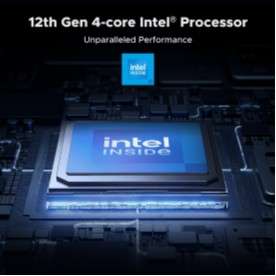
RAID: The goal of RAID is to find the best balance between storage capacity and data protection. RAID 5 provides effective storage utilization but still protects against single-drive failures, while RAID 10 offers improved performance and redundancy for mission-critical business data. When setting it up for the first time, create access controls for users and permissions for shared folders to secure data properly and align workflow.
It would require planning into how you’ll factor this into your existing network infrastructure. The fourth step is to get your NAS in a good, well-ventilated location with power and network access. Add appropriate network configuration, like enabling jumbo frames utilization. Program backup schedules to run during off-peak hours or set remote access for certain personnel in accordance with your organization’s security policies. Monitoring tools should be used to monitor system health, storage usage, and performance metrics so that proactive maintenance and capacity planning can take place.
Maintaining and Upgrading Your NAS System
A NAS system will require regular maintenance to make sure it runs as intended and also to increase its longevity. For example, schedule monthly health checks that review the status of each drive, system temperatures, and firmware updates. Quarterly conduct clean cooling vents to avoid dust settlement to ensure proper airflow. Administer system logs on a weekly basis to detect possible troubles before they affect the operations. Set up automated email notifications for important events such as drive failures or capacity limits.
Ensure you analyze your RAID configuration options when scaling storage. How many is too many drives in an array? You can facilitate automatic recovery from drive failures by implementing a hot spare drive. If you are looking for performance improvements, increase the RAM or implement an SSD cache based on the pattern of usage. Monitor your network utilization to see whether 10GbE upgrades would help your workflow.
They include checking network settings and server configuration for accessibility and if the right cables are used. Use UPS protection to ensure that power issues do not affect you, but there also is a possibility of data corruption. Document all system modifications and ensure you have current backups prior to completing major upgrades. Ensure your backup restoration process is regularly tested.
Investment in Future-Proof Storage Solutions
A 4-Bay NAS system is, therefore, an investment that nobody can overlook — especially if you want to change the way you handle digital assets. Centralized storage, automated backups, and secure remote access can provide important operational efficiency benefits to organizations in today’s data-intensive environment. For the future-proofing of business operations, the flexibility of storage capacity, improved data protection with RAID settings, and the ease of collaboration offered by the system make it an indispensable tool. With such data growth also comes a growing demand for a system that is not only responsive but is feature-rich and can be made to grow alongside a company as it expands, and that’s exactly what a 4-Bay NAS system offers. By assessing your current needs and understanding how a modern NAS solution can revolutionize your data management capabilities, you can take your first step to improve your business storage infrastructure.



